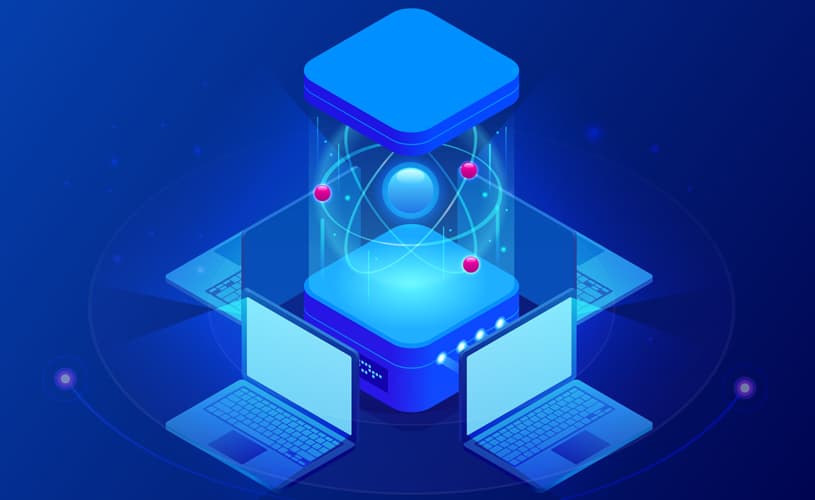A modern data platform is at the forefront of today’s technological evolution, seamlessly integrating a suite of tools tailored to address the intricate data necessities of modern businesses efficiently. This platform not only offers a user-friendly interface for effortless data visualization and accessibility but also ensures robust security measures for authorized users, vital applications, Business Intelligence (BI) utilities, and pioneering Artificial Intelligence (AI) innovations.
Populating the Platform
Businesses are overrun with data that contains valuable information that a modern data platform can help to uncover. The platform must be able to ingest data from various sources and formats. Data that needs to be accessed frequently is loaded into the data warehouses that are a component of the overall data platform. The data is typically structured as tables accessed using a structured query language (SQL). The table data is stored as rows for transactional systems and columns for high-performance data analysis applications.
A modern data platform should support semi-structured and unstructured data access delivered in batches or as continuous streams. Data loading is performed as data becomes available in the case of streamed data or scheduled batches overnight or at regular intervals, depending on the requirements of the consuming application or analysis needs.
ETL and ELT
Data pipelines manage raw operational or external data flow into data warehouses or data lakes where it can be used for analysis, exploration, or data-driven applications. Extract transform and load (ETL) technology transforms data before it is loaded into a data warehouse. The extract load transform (ELT) approach cleans and organizes data after it is made available for analysis in the target or intermediate database.
Streaming
IoT, weblogs, social media, and online gaming are examples of data types that drive the need for streaming data. Kafka and Spark are common technologies to enable the collection of high volumes of streamed data and provide a publishing mechanism for applications such as data platforms to subscribe to message queues. Streaming data integration enables real-time applications that depend on immediate data access.
Analysis
A data platform needs to do more than store data. To gain useful insights, the loaded data must be analyzed and actionable. Data mining, advanced analytics, and simple SQL-based reports provide the visibility the business needs to make operational data-driven decisions. Visual dashboards created in tools like Power BI, Looker, and Qlik offer comprehensive chart types to present compelling insights into the collated data.
Hybrid Deployment
It should offer flexible deployment on-premise and in multiple cloud environments. The Actian Data Platform can be deployed on Linux and Windows servers on-premises and on Google Cloud, Azure, and AWS.
Modern Data Platform Usage Examples
Organizations can use it to support the following types of applications:
- Customer 360– to inform sales, marketing, and customer satisfaction and loyalty.
- Patient care – for healthcare providers and payers.
- Business performance management – using KPI-driven dashboards for managers and executives.
- Insurance quoting – for fast, risk-balanced insurance quoting online.
- Loan qualification – for finance providers.
- Stock information systems – to inform traders of activities that impact stock prices.
- Clinical trial information systems – for drug development.
Benefits of a Modern Data Platform
The definition of a data platform varies by vendor, but below are some benefits a business can expect:
- Higher Consistency: By standardizing on a single data platform, multiple data formats from many sources can be consistently and reliably ingested, making it easier for users to analyze and share insights.
- Increased Trust: By collecting an organization’s data into the data warehouses in it, metadata can be used to record the associated data source and level of trust associated with a particular data set.
- Enabling Self-Service: It makes it easy for any user to be a data analyst without relying on IT personnel to produce reports, which can take days or weeks, resulting in potentially missed business opportunities because the data insights were not available fast enough.
- Improved Data Quality: It promotes the use of high-quality data and removes poor-quality information from the data repositories.
- Increased Data Governance: Because it can provide a global view of all data repositories under its umbrella, data stewardship, and governance policies can be verified for compliance with regulations and enforced.
- Promoting Reuse: Data pipelines, ETL jobs, and data integration policies can be shared as part of the platform repository to accelerate new projects and enable continuous improvement in data management best practices.
- Embrace Legacy Big Data Repositories: Most large organizations have big data repositories that contain valuable data. The new data platform must connect to those repositories using integration connectors to the legacy data formats.
- Improved Performance: A modern data platform can parallelize load query operations to perform analysis faster than traditional data warehouses.
- Increased Security: It can secure data by encrypting data at rest and in motion, through role-based authentication, and data masking.
Actian Data Platform Capabilities
The Actian Data Platform is highly scalable and includes the following capabilities:
- Hybrid cloud deployment to support on-premise and multi-cloud environments.
- Secure encryption, data masking, and integration with Active Directory.
- Parallel query at CPU core, system, and cluster level.
- Columnar storage for faster data retrieval without index maintenance overheads.
- Built-in data integration and data quality with hundreds of pre-built data connectors and a REST API.
- Distributed query across instances.


